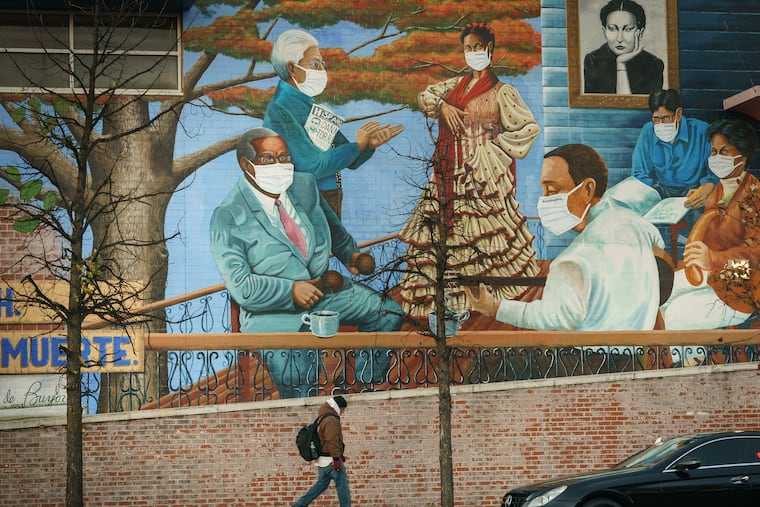Looking to the arts and culture community as a source of civic healing | Rebuilding Philly
Besides contributing a multibillion-dollar economic impact to the city, a robust arts infrastructure fosters neighborhoods that possess more social cohesion and greater community engagement.

Reading the news, walking the streets, it is easy to become discouraged about life in Philadelphia. One way to address the city’s complex and persistent problems is through community-engaged arts and culture, sometimes known as creative placemaking.
Arts and culture? For many, this may seem like an unconvincing tool to pull out of the toolbox. After all, at the first signs of the economic downtown, Mayor Jim Kenney proposed shuttering the city’s Office of Arts, Culture and the Creative Economy, and slashed the budget for the Philadelphia Cultural Fund, a lifeline to hundreds of arts groups. But creative placemaking holds the potential to reinvigorate Philadelphia’s neighborhoods and strengthen social bonds at the same time.
Rebuilding Philly
Creative placemaking is a way of thinking about arts and culture that embeds cultural concerns in every facet of city life, from community development to public health, recreation to housing. Investing in creative placemaking means investing in what former National Endowment for the Arts chairman Bill Ivey calls an “expressive life” — a life that is hopeful, generative, and joyful.
Creative placemaking is something for which our city is already well-known. In 2020, as the pandemic took hold, West Philadelphia’s Tiny WPA worked with the Department of Parks and Recreation to develop a pair of mobile Build-Your-Own Playground prototypes that were deployed around the city. The Village of Arts and Humanities, in North Philadelphia, is building a Civic Power Studio, where artists, neighbors, and law enforcement collaborate to generate compassionate strategies for public safety. And who could leave out Mural Arts Philadelphia, whose programming invests in people experiencing homelessness or living with mental illness as it enlivens our public spaces with striking works of public art.
Yet, as much as Philadelphia has become part of the vanguard of creative placemaking practice, the work faces many challenges. The first hurdle is the mistaken notion that art is somehow a frill, a line item to be cut from budgets when more pressing priorities arise. This misconception has been consistently demonstrated to be false, as arts and culture’s social and economic values are well-documented. The arts contribute $4.1 billion to the regional economy.
But more than dollars and cents, research from the University of Pennsylvania’s Social Impact of the Arts Project finds that the presence of a robust arts infrastructure is positively associated with neighborhoods that possess more social cohesion, higher rates of school attendance, and greater civic engagement. Decimating community-based arts and culture risks undermining the social and economic benefits of this vibrant thread of neighborhood life.
» READ MORE: Introducing Rebuilding Philly, a series on creating a more equitable city in the wake of COVID-19 | Opinion
Creative placemaking has also had to overcome its own critics. The very name “placemaking” seems to imply that art is being created in an area that is placeless and needs to be remade, presumably along the lines of those with power and influence. This charge has led some to prefer the term “placekeeping” in order to emphasize that existing residents, cultural patterns, and places are worthy of preservation, even as new ideas are being cultivated.
Whatever it is called, a bigger concern is that placemaking, if it is not handled with care, will usher in gentrification by attracting attention and investment to newly upgraded neighborhoods. It is vital that creative placemaking remains grassroots, a resident-driven activity designed to marry the best of what exists with a most inspiring vision for the future.
If creative placemaking is going to help us meet this moment, to carry us through the era of COVID-19 and beyond, we need to build up the structures that make it possible. Work like this is expensive — and time-intensive — by design. Recent research by Drexel University’s Lindy Institute for Urban Innovation reveals that creative placemaking projects typically require as many as eight discrete funding sources. Therefore, we need to expand state-level programs like the Pennsylvania Council on the Arts’ Creative Communities initiative, which supports creative placemaking in Philadelphia and across the commonwealth.
We need to increase funding for the Philadelphia Cultural Fund so that community-based arts and culture can continue to provide neighborhoods with the maximum benefits. And the mayor should fully restore the Office of Arts, Culture and the Creative Economy, but remake it with creative placemaking and community arts and culture as core to its mission.
Beyond funding, we need to spread the word about the benefits of creative placemaking as a source of healing, to connect the dots across sectors. There is no shortage of good ideas and excellent practitioners already present and active in Philadelphia, addressing pressing concerns of safety, health, and education through creative placemaking. The next step is a commitment to a collective investment in the future of Philadelphia’s expressive cultural life.
Andrew Zitcer is an associate professor in the Westphal College of Media Arts & Design at Drexel University, where he directs the urban strategy graduate program.